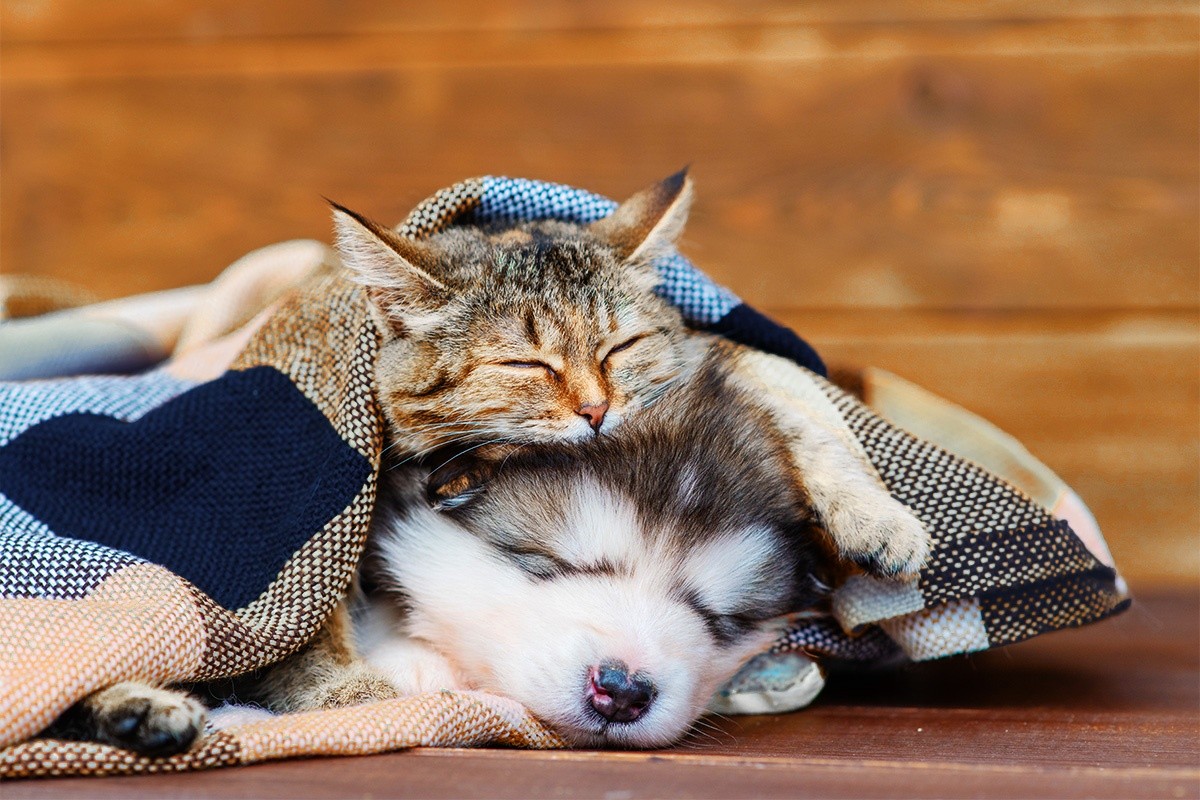
Discover how more than 140 years of expertise, quality, and passion for sleep helped shape America’s #1 Mattress Brand.*
— by Sealy on Jul 23, 2025
From studying the positions they lie in to their prefurred snoozing spots, we’ll help you get to know your pets better so you won't have to hit the books. For example, the term “cat nap” is deceiving. While a human’s target goal is to rest about eight hours a night, some cats are only awake that long, sleeping (on average) the other 16 hours of the day.* For dogs, the number fluctuates depending on breed and age, but you can expect your canine companion to snooze for about 12-14 hours throughout the day.**

Your pet is domesticated and may not have spent time away from a human home, but the behavior patterns that keep them alive in the wild are still present. While waking body language differs greatly between dogs and cats, their sleeping positions show similarities. Both animals are more vulnerable when their stomachs show. If your dog or cat sleeps on their back, they’re communicating that they feel safe and comfortable in your presence. Not only is their belly exposed, but the prone position makes it more difficult for them to spring to their feet in case of danger. This display of trust also shows when your pet sleeps on its side. While they can reach their feet faster, their vital organs are still on display, meaning they feel secure in their environment.*** But if your furry friend sleeps curled up or with their belly to the ground and their paws tucked beside them, don’t assume they’re uncomfortable around you. Animals will often conserve body heat by curling up in bed, and curious creatures may want to be ready at a moment’s notice to investigate changes in their surroundings.+
Where your pet likes to sleep can tell you more about them, as well as impact your own sleeping habits. Due to size limitations, dogs may not have the option to sleep in your bed; however, owners who let their pets sleep with them may develop a stronger bond.++ Cats who sleep with their people also show a reinforced connection, and their smaller size allows them to pick their placement more easily. A cat that sleeps on your chest may prioritize warmth and the comfort of your steady breathing and heart rate, while a cat that sleeps at your feet shows they want to be close and protect you while keeping a bit of independence.+++ The feeling of security goes both ways, with a study showing that those with pets in their bed were less likely to use sleep medication than those without animals.^ With the increased bonding and level of security that comes from co-sleeping with a pet, why would someone pass on the opportunity? Co-sleeping with anyone can be challenging, but it gets a little hairier with dogs and cats — pun intended. The fur complication and hygiene concerns may mean more laundry. Space is another factor, especially with larger animals that may sprawl beyond their share of the mattress. Temperature, meanwhile, acts as a double-edged sword, the added warmth being cozy in the winter but stifling in the summer.
Your pet may not use words to communicate, but their body language and behavior speak for them. Whether you have your animal next to you every night or prefer your space, you share a connection with your furry friend. Your dog or cat knows that you’re their person, and sleeping near you shows a level of trust and comfort — even if they don’t share your bed.
Sources:
**Purina
***PetMD
You’re using an unsupported web browser.
A list of the most popular browsers can be found below. Just click on an icon to visit the download page.
Your phone or tablet is using software unsupported by our website. To improve your shopping experience, please update your device to the latest version of iOS or Android OS.